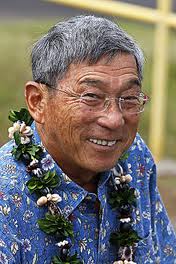 |
| Hawaii Governor - Neil Abercrombie |
Updated: 12:06 am - June 26, 2012
Tribune-Herald staff writer
The future of the state will depend much on the Big Island, particularly with its development of energy and agriculture, Gov. Neil Abercrombie told business leaders in Hilo on Monday.
During the speech to about 130 Hawaii Island Chamber of Commerce members at the Hilo Yacht club, the governor laid out a confident outlook on the state’s future, and hinted at another speech to come later this week that he said is going to be “very, very positive” about Hawaii’s fiscal position.
Saturday marks the end of his first full fiscal year while in office.
“In a few days time I think you are going to be very well pleased,” said Abercrombie, who didn’t offer any details.
But Abercrombie, who turns 74 today, also assured the businessmen and women that the island will not be on the periphery when it comes to the state’s future.
“The Big Island is going to lead the way … in setting the direction of the state,” he said.
Abercrombie said it has “endless possibilities” in regards to providing energy to the rest of Hawaii, adding that the big issue in Honolulu is how to “deliver it to the rest of the islands.”
He didn’t mention geothermal power, considered a key part of the state’s energy future.
Talk of expansion of geothermal production has recently caused a resurgence in opposition to the power source in Puna, which hosts the state’s only geothermal plant.
The state Legislature this last session developed the regulatory framework for the creation of an underwater power cable that would connect the islands, if a private developer decides to take it on.
The idea is that the cable would allow the islands to share cheap, reliable geothermal power, as well as other renewable sources, and lower the costs of energy production.
Abercrombie received applause when he mentioned his support for adding a fourth state senate seat to the island.
The addition was the result of a 25 percent population growth on the island between 2000 and 2010.
“I supported it because it was the right thing to do,” he said.
Abercrombie also said the island is “right in the center and key of it” when it comes to agriculture.
He noted the cattle industry in particular, adding that the state will come out with an agriculture plan in January.
Abercrombie also spoke of the island’s military presence, saying the state should host more troops serving the Pacific region.
“We have to be ahead of the curve,” he said, noting the transition of troops out of Okinawa, Japan.
“We have the training capacity for 21st century marines and army in Pohakuloa.”
He ended his speech by telling the chamber, “I think we’re on our way to a new day in Hawaii and on the Big Island in particular.”
Email Tom Callis at tcallis@hawaiitribune-herald.com.






